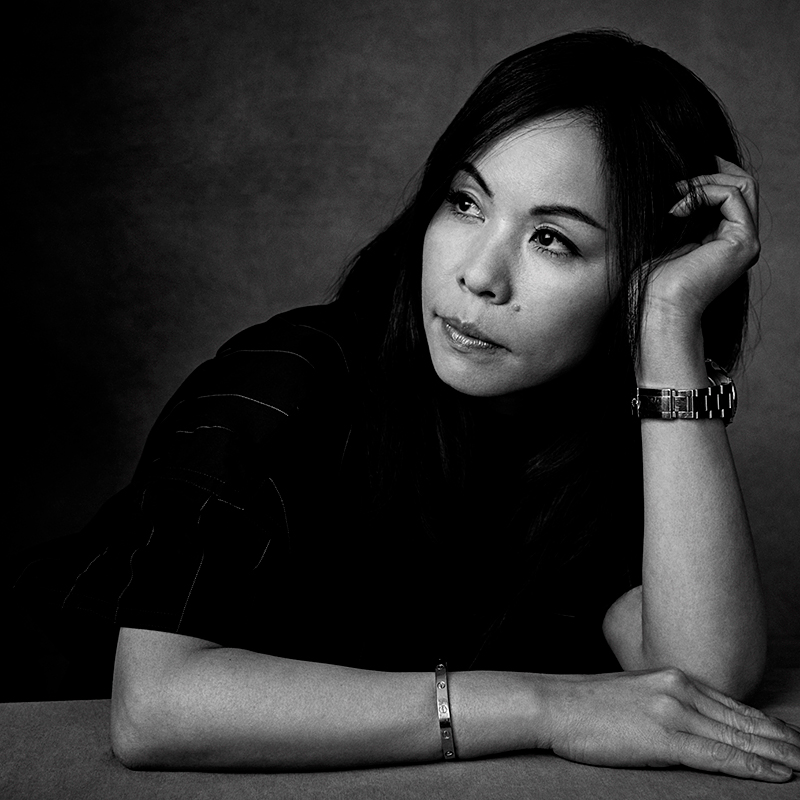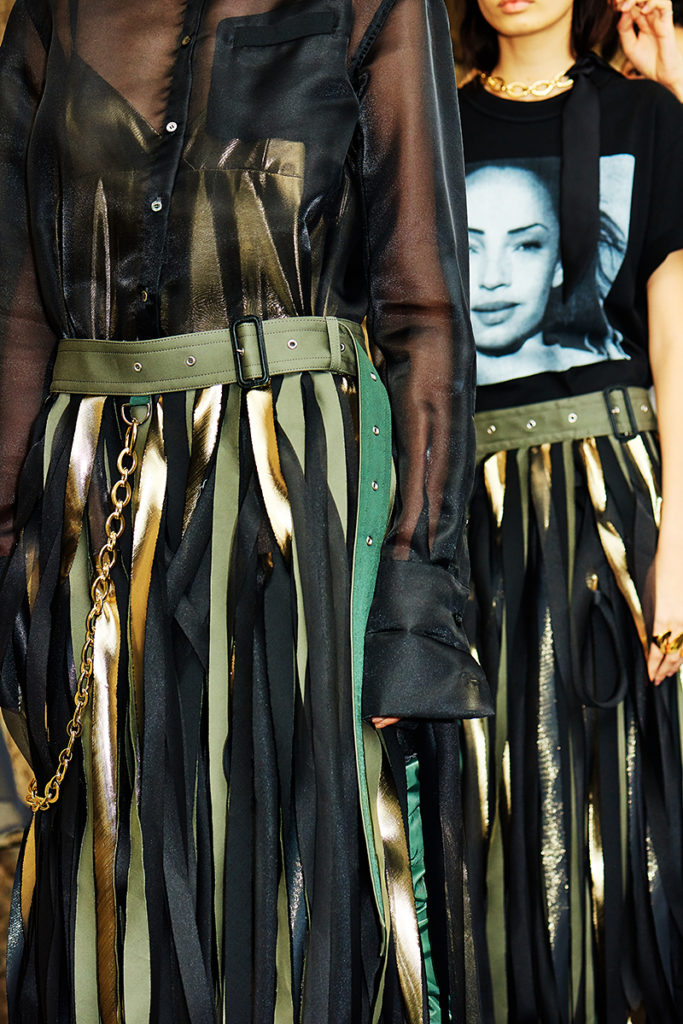Spring/summer 2021 has been a season of firsts for many brands—and Sacai was no exception. After 11 years of showing at Paris Fashion Week, the 21-year-old brand returned to staging a show in Japan this season due to the unprecedented limitations caused by COVID-19. But this in no way stopped Chitose Abe and her team from staging a memorable show.
The show was held at the Enoura Observatory at the Odawara Art Foundation—an hour and a half drive out of Tokyo. Marking not only Sacai’s return to Japan, but a collection designed against all odds: pandemic-related challenges and a high chance of rain, given the outdoor venue. But the master of hybrid garments was unfazed—Abe and team rose to the challenge and the show was a haunting, serendipitous alchemy of nature and craft. And with the crooning tunes of Sade in the background, Sacai’s spring/summer 2021 show was truly one for the books.
Speaking to Vogue Singapore about one of Sacai’s most momentous collections, Abe shares about designing in a pandemic, her love for Sade and the label’s return to Japan.

What was the message of your spring/summer 2021 show?
It might not be the answer you expect, but when we decided to do this show in Japan, we thought of—of course—doing it in a digital way, like a short film like we did for our men’s collection. But the most important thing for us this season, which happens to also be the true message of this show, is that we were able to show a real, live runway show in Japan this time. Fashion should be fun, and it has the power to make people happy. And so I feel that one of the biggest messages of this show was that we succeeded in showing a real runway show, even amidst this difficult time.
Sacai has always shown at Paris Fashion Week, and this season was an exception due to the pandemic. What was it like showing in Japan instead?
It was a very different moment for us to show in Japan, especially due to the pandemic. There were very few models, we had to work remotely. But despite the different and difficult situations, we worked the same way we did in Paris—we worked with the same stylist, we worked on the music remotely. It was fun doing it in Japan, and we have many wonderful memories of working to make the show happen.

The collection draws influences from the British musician Sade. Tell us about the significance behind referencing her music—what is your personal relationship to Sade’s music?
Sade has always been one of my favourite singers. She’s such a legendary musician. It was a pleasure working with her. As you know, we worked together with Sade on the t-shirt as well as the music—the song that we used in the show, ‘Kiss of Life’, is one of my favourite songs and influenced the collection a lot.
The Enoura Observatory built and designed by Hiroshi Sugimoto was very much about the relationship between humans and nature. What was the inspiration behind the choice of an outdoor setting for the show?
We worked closely with the Odawara Art Foundation, where the Enoura Observatory is located. I really wanted to bring this beautiful location to the world. Although it takes an hour and a half by car, having everyone arrive at the venue was so worth it. The location was, of course, very beautiful but the weather is a very important consideration when you stage a show outdoors. We were aware of the risk of heavy rain, and it did rain in the end—but we took it as a positive outcome. The location is made of these beautiful stone surfaces, and when it rains, it sparkles and becomes even more beautiful. So we definitely saw it as a positive outcome, and we would even say that the rain was an unexpected part of the production. Having a runway show outdoors in nature ended up melding really well with the collection.

Your signature style of hybrid garments has long allowed your consumers to wear their pieces in many different ways. With the pandemic, people have resonated more than ever with this sentiment of sustainability and buying better. Was this idea of versatility and sustainability always embedded in your approach to design?
It’s not new to us—this pandemic didn’t prompt us to rethink our sustainability philosophy. The driving force of the brand has always been very standard, with our shirts and military fabric. So it’s always been about taking pieces that everyone is familiar with, and reconstructing them into something that is completely new. For those reasons, Sacai pieces have always been garments you can wear any time of the year, for a long time. That approach inherently and eventually becomes sustainable, hopefully. The pandemic hasn’t changed that—it’s something we’ve been doing for a long time. On the production side, we never intend to produce significant amounts of product—that’s not us. We always try to produce and sell to our clients so that we can have a great sell-through without having a bunch of leftover stock. It’s what we’ve been doing for a long time as we eventually and gradually upgrade our approach to sustainability at the brand.

Given that this is such an unprecedented time for fashion brands all around the world, what do you think you’ll remember this collection as—especially in the wider narrative of Sacai?
This show was obviously very challenging for many reasons—not just the rain, but also having a show in Japan and not Paris. But in many ways, it will always be one of our great memories. I will always remember this show as a very strong, positive show. It’s quite an emotional memory.
What is your biggest hope for the fashion industry? Do you have any plans to go back to Paris after this season?
It’s really difficult to talk about the fashion industry because it’s such a huge industry. Depending on the situation in Paris, it’s hard to say at the moment. But having this show in Japan this time made us realise the importance of being able to communicate directly and not digitally; having people be able to meet, talk and touch the clothes. Those are things that we really miss. As of now, we don’t know if that would be in Paris or even other cities, but I do feel that that being able to travel, communicate, and meet in person to show the collection is very important.

Finally, how do you think this pandemic has affected your vision for Sacai moving forward?
Our brand is almost 21 years old, and when a brand has been around for as long as 21 years, you tend to do the everyday, daily things very smoothly. This collection happening in Japan and against the backdrop of COVID-19 has made me realise the importance of being to be able to do the same things, but in a unique way. It’s something that I’ve been doing for a long time, but every season I have always tried to create something new. In a way, the pandemic made me realise that you need to go over what is in front of you to be able to build something new for the brand in order to stay positive and unique.





